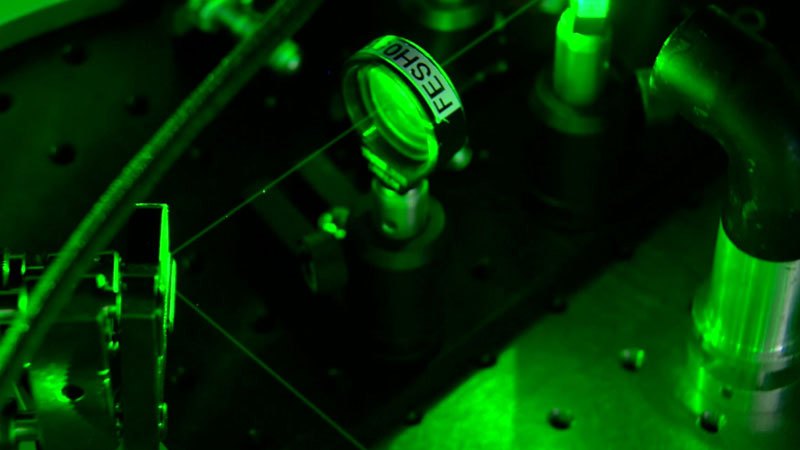Laser quest

The production of increasingly sophisticated femtosecond lasers is essential for fault analysis within integrated circuits, chemical detection and precision machining. For over five years, Heriot-Watt University's Ultrafast Optics research group and its futuristic spinout – Chromacity – have consistently provided responses to global challenges, often conquering unchartered territory in the process.
The Ultrafast Optics laser research group at Heriot-Watt University focuses on novel solutions to problems in areas of microscopy, metrology and spectroscopy. In 2012, the team worked on developing robust femtosecond lasers for use in a vital industrial research project funded by the US Government through its Intelligence Advanced Research Projects Activity (IARPA) programme. The project required lasers that produce short 100-femtosecond pulses at an infrared wavelength – 1270 nanometres – which was not commonly available at the time. This highly specific requirement allowed the pulses of light to create a tiny but very localised photocurrent in an integrated circuit – an action which, by disrupting the chip's operation, revealed the ‘bottleneck' speed-limiting transistors. Once identified, these circuit sites could then be redesigned to address the problem.
Letter to America
The team's research – in which they collaborated with major US companies, DCG Systems (now Thermo) and Freescale Semiconductor (now NXP) – inspired a new range of unique femtosecond lasers. Set apart by their distinctive performance characteristics, these lasers were shipped to the team's US partners and integrated into state-of-the-art failure-analysis workstations. The lasers now play a routine part in debugging chips destined for the next generation of smartphones and computers.
The techniques used throughout the IARPA project led to a number of international patents, in both integrated-circuit fault diagnosis and femtosecond laser technology. Furthermore, Heriot-Watt University's Head of Institute of Photonics and Quantum Sciences, Professor Derryck Reid, has been officially recognised as one of the co-inventors.
The team realised there was a significant opportunity to further develop femtosecond lasers that could operate at a whole host of different wavelengths. With this considered, an entry was made into the 2012 Converge Challenge Business Plan Competition, and a third-place finish resulted in the award of a prestigious business start-up package. Chromacity Ltd was subsequently launched in February 2013, with the mission to push the boundaries of its femtosecond lasers even further.
Bright spark
Over the last five years, Chromacity has fully commercialised the tuneable femtosecond lasers originally developed by the Heriot-Watt University research group. This includes the company's ‘Spark' femtosecond laser and optical parametric oscillator technology. The lasers operate from one to 12 micrometre wavelengths and have been sold to customers across multiple sectors, from life sciences and engineering, to defence and academia. These versatile systems can also be applied to chemical detection, failure analysis, laser machining, quantum optics and a variety of imaging.
Chromacity has now been successfully operating for more than half a decade, and sold lasers throughout the UK, Europe and the US. As Scotland's first new laser manufacturing company in ten years, it has also had a positive economic impact on its host nation, raising £1.2m of seed investment and growing to 10 employees over the last three years.
Key information
Derryck Reid
- Job title
- Professor
- d.t.reid@hw.ac.uk